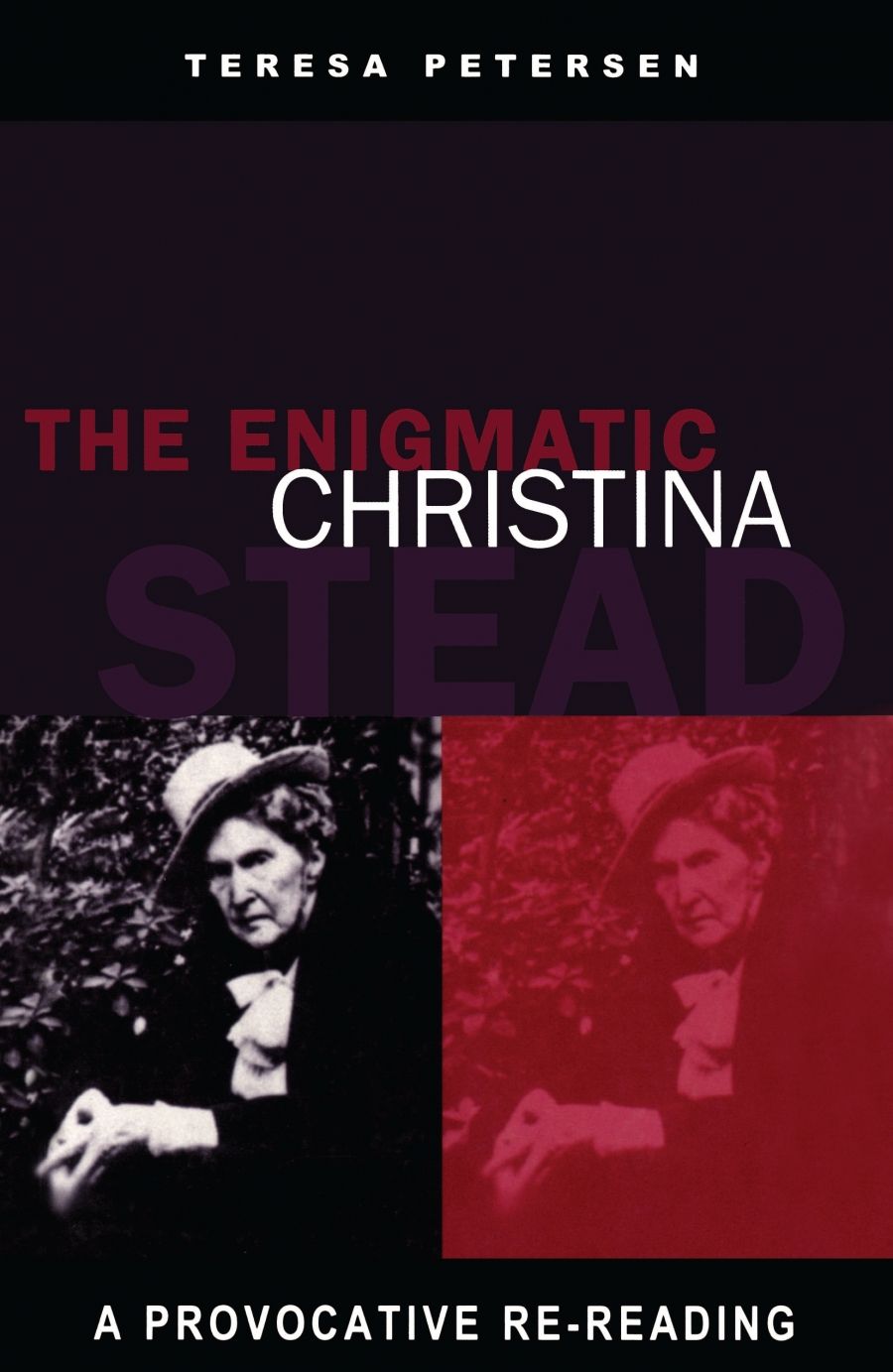
- Free Article: No
- Contents Category: Biography
- Review Article: Yes
- Online Only: No
- Custom Highlight Text:
Teresa Petersen’s study of Christina Stead’s fiction is littered with startling assertions about Stead’s sex life. Petersen suggests that Stead did not actually love her life partner, Bill Blake, in a sexual sense and that a yearning for fatherly love drove her forty-year relationship with him. She maintains that Stead struggled with her own lesbian desires throughout her life, and, unable to come to terms with her homosexuality, recreated herself in her fictional characters. While Petersen stops short of saying that Stead engaged in lesbian relationships, she contends that Stead’s novels are infused with lesbian eroticism in a displacement of Stead’s own desires onto her women characters. If Stead’s life with Bill was so happy, as Stead consistently maintained, why, Petersen asks, didn’t she portray positive heterosexual relationships between men and women?
- Book 1 Title: The Enigmatic Christina Stead
- Book 1 Biblio: MUP, $29.95 pb, 263 pp
- Book 1 Readings Link: booktopia.kh4ffx.net/4e5bkL
This question, put by Petersen in her introduction, reflects the simplistic assumption underlying her argument – that somehow Stead’s fiction ought to mirror her own life (with a primary heterosexual relationship) and because it does not, Stead must have been a closet lesbian. Petersen’s argument denies Stead any aesthetic distance from her art and therefore presents a big hurdle for the reader attempting to persevere with her book. But that is only one problem with Petersen’s reading of Stead’s life and art. There is another fundamental problem with an analysis of Stead’s fiction that relentlessly speculates about the author’s sexuality and that of her characters by focusing on ‘what Stead leaves out of her narratives’, ‘the covert’, and what is ‘almost imperceptible’, to use Petersen’s own words.
Petersen’s study is the latest in a series of texts that focus on Stead’s psychosexual behaviour, guessing about her most intimate relationships, and jumping from her texts to her life and back again with abandon, rather than examining the ideas that she consistently explores in her works and taking them seriously. Hazel Rowley’s biography of Stead, published eight years ago, popularised this psychoanalytical approach to Stead’s fiction. Rowley portrays Stead as a bitter and perverse woman for whom childhood deprivation forever sullied her relationships with others, especially women. Petersen extends this reading by expanding the lesbian theme, touched on by Rowley. Not only does this approach to Stead’s fiction obliterate certain elements of her art, by mistaking her chosen generic and aesthetic form for a personality flaw, it diminishes the political content of the works themselves. Moreover, it undermines Stead’s immense intellectual achievement.
Stead was a writer of encyclopedic breadth and vision. With Letty Fox: Her Luck (1946), she commenced a four-book satirical history of the United States in which she documents and critiques the changes in American political culture from the pre-war period until well into the Cold War. Before this, she had published House of All Nations (1938), a satirical study of corruption in European banking during the 1930s, with a compelling socialist analysis of the financial instability and moral torpor that coincided with the rise of Hitler. Two of Stead’s other novels, Cotters’ England (1967) and Miss Herbert (The Suburban Wife) (1979), examine various aspects of British working class culture: the paralysis of social change after World War II and the retreat of the intellectual Left in Britain at this time.
The National Library of Australia holds a massive collection of Stead’s notes, revealing her scholarly approach to her craft and her commitment to producing historically referential fiction. Stead chose to keep notes taken from newspapers, history texts, and court trials, so that her fiction would be historically accurate and intellectually rigorous. She was one of the most politically radical writers of the twentieth century, and she was never afraid to break taboos. If she had wanted to explore homosexuality in her work, she would have.
Stead struggled all her life to escape the constraints of her own identity in seeking to be published. It began in 1925, when Angus & Robertson in Sydney rejected her first set of stories on the basis that they simply could not sell the work of an unknown Australian author in their tiny Australian market place. In Paris, Stead tried many publishers with her first draft of Seven Poor Men of Sydney (1934) but was unable to get it published until after her more European Salzburg Tales (1934) attracted interest. Between 1952 and 1966, Stead had nothing published. It is difficult to establish whether or not Stead and Blake were formally blacklisted or simply suppressed as a result of their communist sympathies, but Stead’s spirit seemed to break under the strain.
The excessive concern with Stead’s ‘secret’ sexual desires, expressed by Petersen and Rowley, has meant that Stead’s contribution as an intellectual with a great deal to say about the politics of her century has been belittled and ignored. It is vexing that this interest in one dimension of Stead’s life (without evidence to sustain the claim) continues to devalue her explicit political analysis of key events in the twentieth century.


Comments powered by CComment